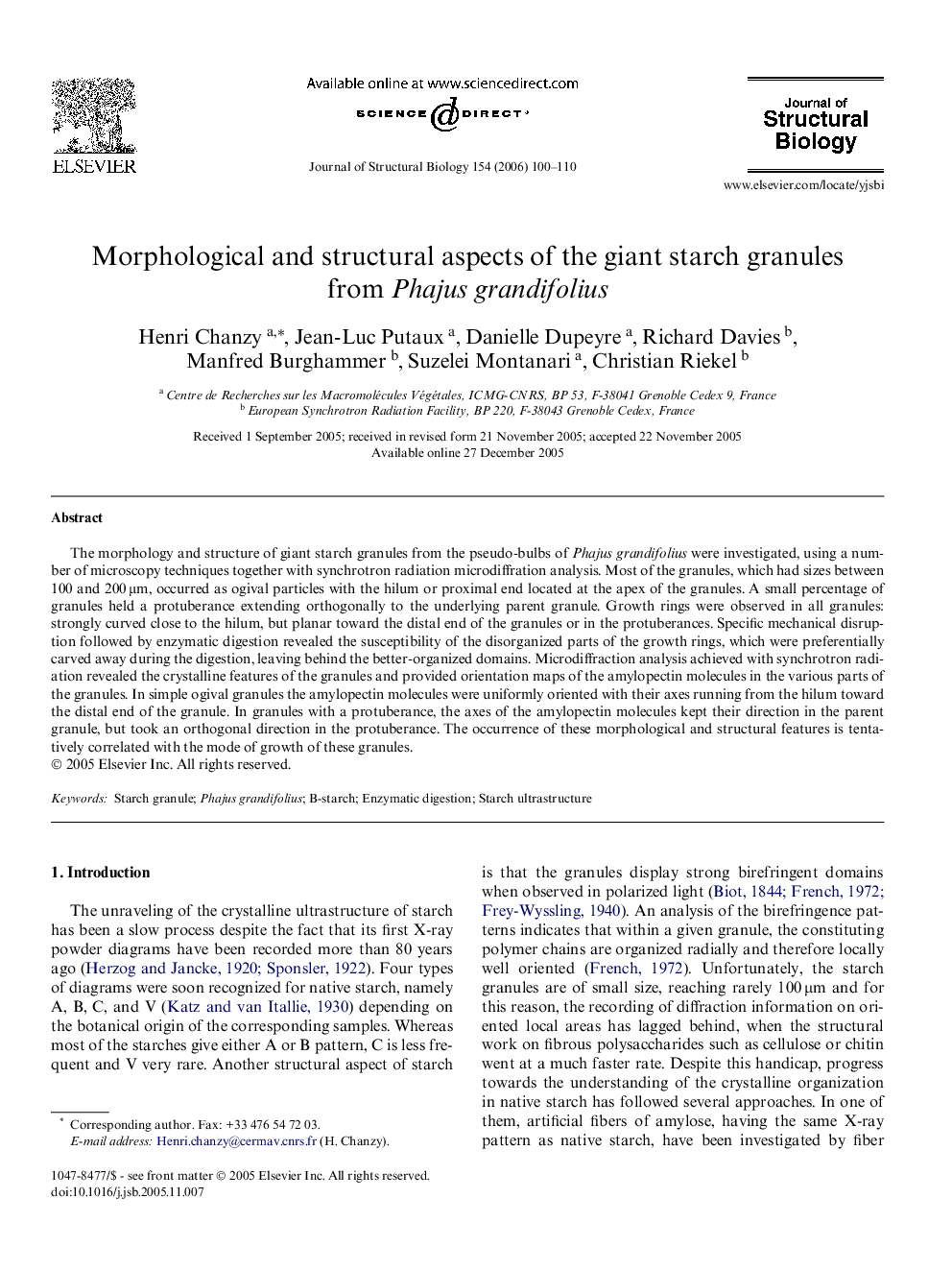| Article ID | Journal | Published Year | Pages | File Type |
|---|---|---|---|---|
| 2829531 | Journal of Structural Biology | 2006 | 11 Pages |
The morphology and structure of giant starch granules from the pseudo-bulbs of Phajus grandifolius were investigated, using a number of microscopy techniques together with synchrotron radiation microdiffration analysis. Most of the granules, which had sizes between 100 and 200 μm, occurred as ogival particles with the hilum or proximal end located at the apex of the granules. A small percentage of granules held a protuberance extending orthogonally to the underlying parent granule. Growth rings were observed in all granules: strongly curved close to the hilum, but planar toward the distal end of the granules or in the protuberances. Specific mechanical disruption followed by enzymatic digestion revealed the susceptibility of the disorganized parts of the growth rings, which were preferentially carved away during the digestion, leaving behind the better-organized domains. Microdiffraction analysis achieved with synchrotron radiation revealed the crystalline features of the granules and provided orientation maps of the amylopectin molecules in the various parts of the granules. In simple ogival granules the amylopectin molecules were uniformly oriented with their axes running from the hilum toward the distal end of the granule. In granules with a protuberance, the axes of the amylopectin molecules kept their direction in the parent granule, but took an orthogonal direction in the protuberance. The occurrence of these morphological and structural features is tentatively correlated with the mode of growth of these granules.
